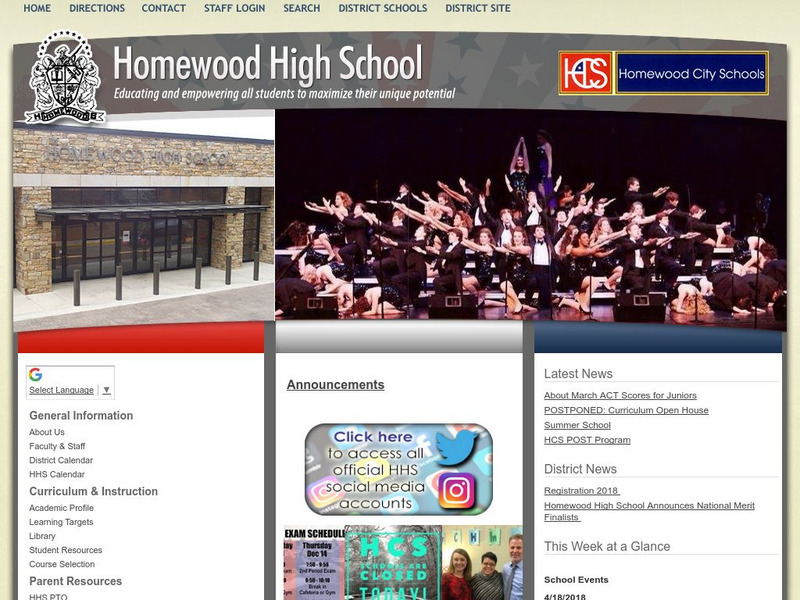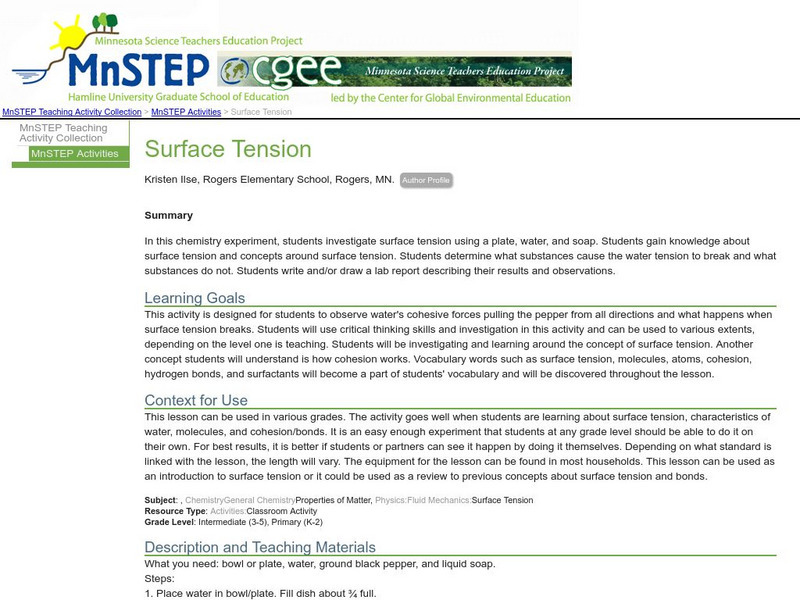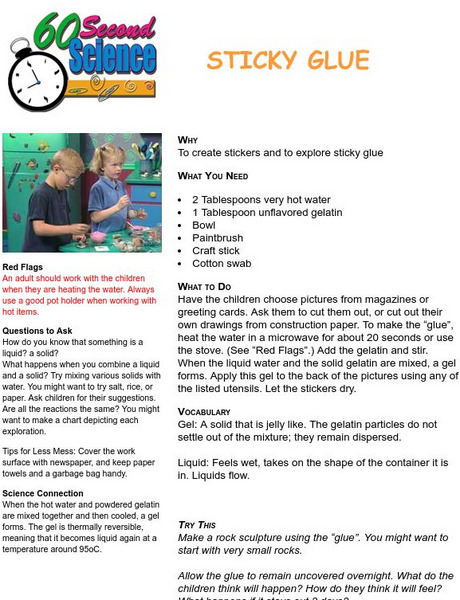Hi, what do you want to do?
Texas Instruments
Texas Instruments: Freezing and Melting of Water
Freezing temperature, the temperature at which a substance turns from liquid to solid, and melting temperature, the temperature at which a substance turns from a solid to a liquid, are characteristic physical properties. In this...
Science Struck
Science Struck: An in Depth Comparison of Cohesion vs. Adhesion
Explains what cohesion and adhesion are; what their effects are in a liquid; what surface tension, a meniscus, and capillary action are; and gives examples of where one can observe cohesion and adhesion.
Scholastic
Scholastic: Study Jams! Science: Matter: Periodic Table
A video and a short quiz on the periodic table of elements and how it is organized.
Other
King's Centre for Visualization in Science: Scientific Models
A series of interactive applets use scientific models to teach some basic concepts of matter, including states of matter and physical and chemical changes.
Carnegie Mellon University
Chem Collective: Brownian Motion
Particulate level simulations that show only solute particles are convenient, since they focus student attention on the molecules of most interest. However, such solute molecules move in a Brownian manner. This simulation helps students...
American Chemical Society
Middle School Chemistry: Changing State: Condensation
Students investigate water cycle processes by testing how cooling affects the rate of condensation of water vapor.
New York University
Nyu: Math Mol: Motion of Molecules
Examine the link between molecular motion and energy. Observe the movement of a molecule at room temperature. Learn about the different types of molecular motion.
Science Education Resource Center at Carleton College
Serc: The Three States of Matter
In this Physical Science exploration activity, students explore the meaning of the words solid, liquid, and gas. Student groups complete a chart with examples of each type of matter and its properties and then record their observations...
Other
Homewood City Schools: Classification of Matter
This Homewood City Schools site has an outline form and contains lots of information about the classification and composition of matter. Some of the topics covered are matter and temperature, changes in state, composition of matter, and...
Other
Nautilus: Neon Properties
A series of slides from Nautilus with good, well organized information on the properties of neon.
Science Education Resource Center at Carleton College
Serc: Mn Step: Surface Tension
A simple experiment investigating surface tension and the cohesive property of water, using just water, pepper, and liquid soap.
TeachEngineering
Teach Engineering: Viscous Fluids
Students are introduced to the similarities and differences in the behaviors of elastic solids and viscous fluids. Several types of fluid behaviors are described--Bingham plastic, Newtonian, shear thinning and shear thickening--along...
Science Buddies
Science Buddies: Can Water Float on Water?
Of course it can, you say: ice is water and ice floats. And you're right. But we're talking about water in the liquid phase Can liquid water float on water? The goal of this project is to investigate what happens to layers of water with...
BioEd Online
Bio Ed Online: How Can We Find Out What Is in Water?
In this lesson plan students use simple paper chromatography to investigate a mystery liquid. Student sheets are provided in English and in Spanish.
Concord Consortium
Concord Consortium: What Makes Water Special?
Activity 2 investigates Why is water different from other liquids? This activity will investigate properties of different liquids. Students will explore what makes honey gooey and thicker than water. And why some liquids evaporate faster...
Chemicool
Chemicool: Neon
This site, which is provided for by Chemicool, gives a summary set of data tables on the physical and chemical properties of neon.
Other
Science Alive: Melting Point Simulation
Percy Julian and Josef Pikl used the fact that melting point-the temperature at which a substance changes from a solid to a liquid-is a characteristic property of a substance to prove that the British chemist Robert Robinson could not...
New York University
New York University: About Water and Ice
Page uses movies and 3D images to explain how properties of water relate to polarity and hydrogen bonding.
Other
60 Second Science: Easy Putty
Explore the properties of colloids while making putty. Discover how some mixtures can display properties of both solids and liquids.
PBS
Pbs Teachers: Ice Cream Shake
Investigate states of matter while making ice cream. Explore how to turn a liquid into a solid by removing heat energy.
ClassFlow
Class Flow: Matter Review
[Free Registration/Login Required] Review the three forms of matter with this flipchart. This could also be used for a pre-assessment before a unit on matter.
Science and Mathematics Initiative for Learning Enhancement (SMILE)
Smile: Physical and Chemical Changes
This lesson plan focuses on the difference between physical and chemical changes of matter.
NC State University
The Engineering Place: Silly Stuff
An investigation into change of state where students make silly putty.






















